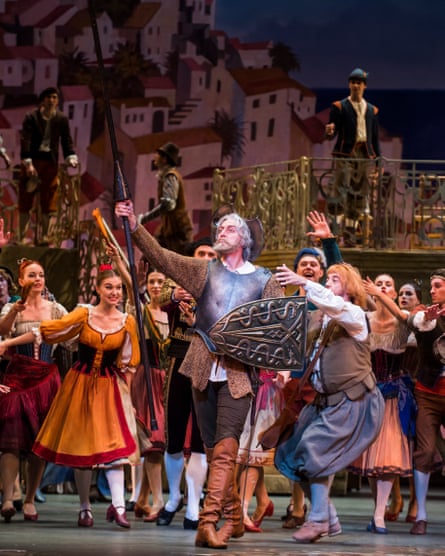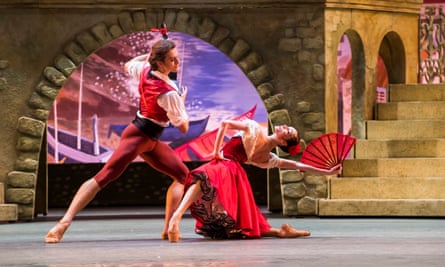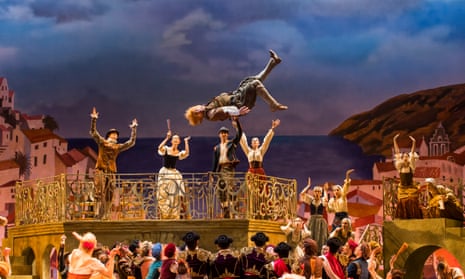When the Bolshoi performed their previous production of Don Quixote, it was as though a dysfunctional but hugely beloved family had rolled into town. The ballet’s cast of characters had become embellished over time into a troupe of swaggering show-offs, preposterously colourful rogues and one or two individuals who should have been in community care. Its costumes had all seen better days and its storytelling had been burdened with so many revisions it was in danger of losing its own plot. Yet this Don Quixote was kept alive by the comedy and verve of the company’s performances; and while a new production was long overdue, there was always the risk that it might be at the expense of the ballet’s peculiar heart and soul.

In fact, Alexei Fadeyechev and his design team have done a wonderful job in clarifying the storytelling and restoring some sense of the ballet’s original texture. Visually this ranks among the most pleasing of all the Bolshoi’s 19th-century classics, its elegantly coloured costumes framed by finely judged settings, including an airy Mediterranean village square and probably the most convincing windmill scene of any production I have seen.
The sketchy framing story of the Don (performed with nicely creaking dignity by Alexei Loparevich) is given a crucial glimmer of credibility – his mad dreams of chivalry rooted more in bookishness than dementia – and the rest of the stage action has been choreographed with a far more detailed attention to individual character (the old Soviet style of miming by numbers now hopefully a thing of the past).
Overall the company rise in style to the richness of their material: the flourishing of capes and the snapping of fans in Act I; the precise classicism of the dream sequence in Act II; the castanet-clicking courtiers in Act III – all display the Bolshoi at their collective, bravura best.
Particularly fine in the secondary roles are Vera Borisenkova, mysterious and haughty in the Spanish Dance, and Anna Antropova, lusciously musical and melodramatic in the Gypsy Dance.

But the main point of Don Quixote is to showcase the virtuosity and charm of its two lovers, Kitri and Basil. Denis Rodkin is ideally cast as the latter, for while he lacks the outrageous technical firepower of some of his predecessors, he zips through the big jumps and multiple pirouettes with ease and, much more importantly, he is always in character, his face vivid with mischief, his focus beamed lovingly on his ballerina. Olga Smirnova, however, responds to Rodkin’s ardour with a disappointing blankness. She’s a talented dancer and elements of her technique are mesmerising – her footwork, tight, bright and fast, her jump high and neat. But as the witty heroine she’s oddly miscast, there is no glint of merriment in her dancing, no pulse of sensuality or romance. Smirnova’s Kitri may be admirable, but unlike the rest of the cast, she doesn’t seem to be having much fun.

Comments (…)
Sign in or create your Guardian account to join the discussion